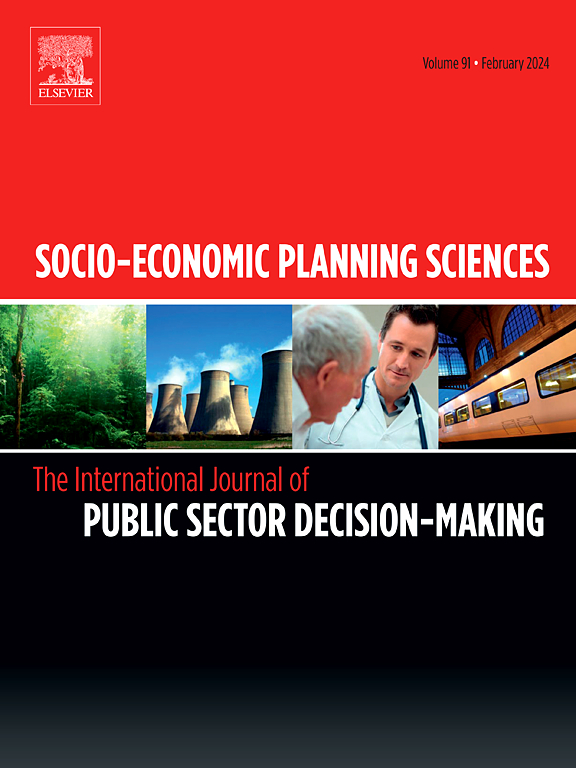公路项目的公共性:公私伙伴关系的多标准决策方法
IF 5.4
2区 经济学
Q1 ECONOMICS
引用次数: 0
摘要
公私合作已成为有效实施公路建设项目的一种解决方案。然而,PPP往往侧重于盈利能力,这引发了对损害公共性的担忧。本研究通过比较政府投资和民间投资两种类型公路项目的公共性来评价公路项目的公共性。回顾了公路相关的各项绩效指标,采用层次分析法估算公共性得分。在专家调查的基础上,选择了效益成本比、公平性、一致性、收费比和道路功能分类五个关键指标。各指标的权重分别为0.580、0.121、0.088、0.078和0.134。该框架已应用于韩国国家交通计划中的8个高速公路项目。每个项目的指标都以9分制进行评估,加权得分是通过将每个指标得分乘以各自的权重来计算的。然后将五个指标的加权得分相加,确定每个项目的总体公开性得分。结果显示,估计有六个项目由政府资助更有利。相反,估计有两个项目更有利于私人投资。每个项目类型的公开性得分受到收费比率和道路功能分类两个指标的显著影响。该框架通过整合运营商、私人投资者和用户的观点来支持公共决策。本文章由计算机程序翻译,如有差异,请以英文原文为准。
Publicness in highway projects: A multi-criteria decision-making approach to public-private partnerships
The public-private partnership has emerged as a solution for efficiently implementing highway construction projects. However, PPP tends to focus on profitability, which raises concerns about compromising publicness. This study evaluated the publicness of highway projects by comparing two types, i.e., government-funded and privately-invested. Various performance indicators related to highways were reviewed, and the analytic hierarchy process was employed to estimate publicness scores. Based on expert surveys, five key indicators were selected, i.e., benefit-cost ratio, equity, consistency, toll ratio, and road functional classification. The weights assigned to these indicators were 0.580, 0.121, 0.088, 0.078, and 0.134, respectively. The proposed framework was applied to eight highway projects from the national transport plan in South Korea. Each indicator for the projects was evaluated on a 9-point scale, and the weighted scores were calculated by multiplying each indicator score by the respective weight. The overall publicness score for each project was then determined by summing the weighted scores of the five indicators. The results showed that six projects were estimated to be more beneficial with government funding. Conversely, two projects were estimated to be more beneficial with private investment. The publicness score for each project type was significantly impacted by two indicators, i.e., toll ratio and road functional classification. This framework supports decision-making regarding publicness by incorporating the perspectives of operators, private investors, and users.
求助全文
通过发布文献求助,成功后即可免费获取论文全文。
去求助
来源期刊

Socio-economic Planning Sciences
OPERATIONS RESEARCH & MANAGEMENT SCIENCE-
CiteScore
9.40
自引率
13.10%
发文量
294
审稿时长
58 days
期刊介绍:
Studies directed toward the more effective utilization of existing resources, e.g. mathematical programming models of health care delivery systems with relevance to more effective program design; systems analysis of fire outbreaks and its relevance to the location of fire stations; statistical analysis of the efficiency of a developing country economy or industry.
Studies relating to the interaction of various segments of society and technology, e.g. the effects of government health policies on the utilization and design of hospital facilities; the relationship between housing density and the demands on public transportation or other service facilities: patterns and implications of urban development and air or water pollution.
Studies devoted to the anticipations of and response to future needs for social, health and other human services, e.g. the relationship between industrial growth and the development of educational resources in affected areas; investigation of future demands for material and child health resources in a developing country; design of effective recycling in an urban setting.
 求助内容:
求助内容: 应助结果提醒方式:
应助结果提醒方式:


